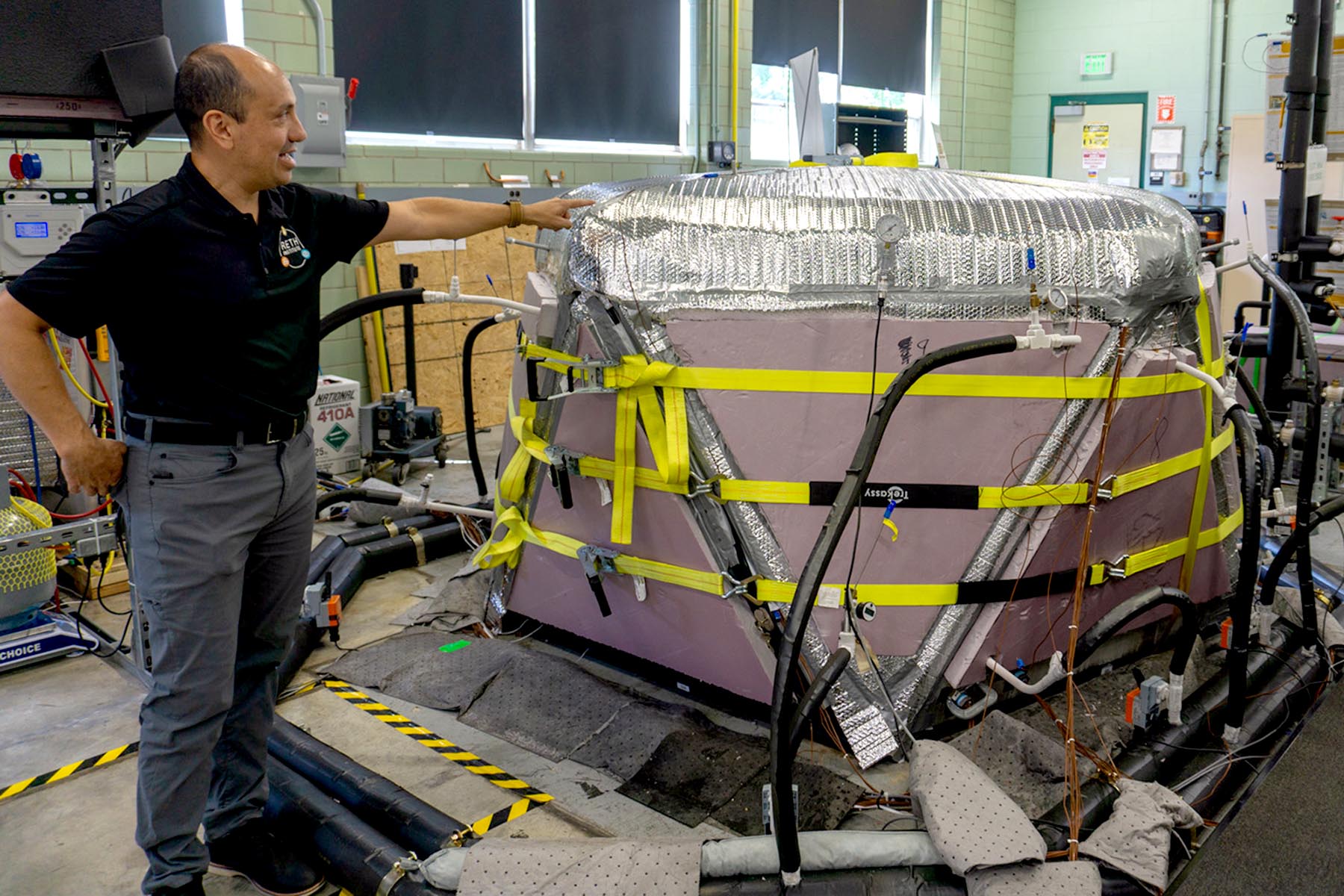NASA visits Purdue to discuss extra-terrestrial habitats
Humans have always aspired to live among the stars — and Purdue University researchers are now working to make it happen. The Resilient Extra-Terrestrial Habitat institute (RETHi), a NASA-funded Space Technology Research Institute, explores how to make future space habitats resilient to disruptions and able to deal with complex situations autonomously.

June 2024 was a busy month for RETHi. NASA visited the Purdue campus for its annual review and Shirley Dyke, RETHi director and Donald A. and Patricia A. Coates Professor of Innovation in Mechanical Engineering and professor of civil and construction engineering, went to Turin, Italy to discuss RETHi at the organization Planet Smart City. The research team participating in the NASA review included 10 faculty from across Purdue, plus 21 graduate students, postdocs, research scientists and research partners from Harvard University, the University of Connecticut, and the University of Texas San Antonio.
RETHi’s mission is to propel space exploration forward by developing new knowledge, technologies, and techniques, while collaborating with NASA centers and industry to gather insight into how to make deep space habitats smart and resilient. Resilience, situational awareness (i.e., systems health), and robotics are what drive the research of the institute. These habitats will be able to anticipate and adapt to possible threats; contain sensors that can learn, detect, and diagnose issues; and utilize autonomous robots to maintain the habitat when humans are not present.
Unfortunately, it’s tough to conduct research related to designing a moonbase without a lab that can replicate the extreme lunar conditions. However, RETHi researchers have found a clever solution: they designed and commissioned a scaled SmartHab cyber-physical testbed (CPT) at Purdue’s Herrick Labs. The testbed is comprised of certain selected physical components, coupled with a number of cyber components. Researchers collect data from both models and study it simultaneously. Data collected from the testbed allows researchers to learn about autonomy and resilience. The habitat CPT is based on a purely computational physics-based simulator named HabSim that considers how a space habitat can recover when experiencing a disruption with cascading effects. These disruptions can include meteors, moonquakes or marsquakes, and thermal fluctuations. HabSim complements the CPT by simulating the virtual parts that are not physically present in the lab.
On June 10th, NASA came to Herrick Labs for their annual review of RETHi. The review included several demonstrations, showcasing how this virtual habitat would handle a real emergency. The scenario started with a meteorite that would cause damage to the outer layer of lunar soil. The soil that covers the virtual habitat and serves as thermal protection. Simultaneously, a possible leak in the refrigerant of the thermal management system may be triggered as a result. How would an uncrewed habitat approach decision-making in this scenario, especially factoring in the long communication delays inherent in a deep space setting?
Christian Silva, research scientist at RETHi said, “We conducted a joint demonstration with our partners at Harvard University. We initiated different faults here in the SmartHab CPT and our systems health management system diagnosed the situation, in this case a pressure leak. Researchers at Harvard were sent this information so they could demonstrate the automated repair of the damage. They did this using a robotic arm able to apply a patch to flexible membranes. We also ran a variety of disruption scenarios considering communication delays in deep space settings. The presence of these delays means that the operators at mission control are able to offer less support to the habitat since things can change rapidly.”

In addition to the CPT demonstrations, RETHi researchers gave presentations that drilled down into the details of their research. Silva said NASA officials were pleased and impressed with the demonstration.
When discussing plans moving forward, Silva said, “We plan to conduct a lot more experiments to scrutinize the methods we are proposing and rigorously validate them. We’ve spent a lot of time designing and building the testbed and now we have a number of research questions that need answers. The principal focus of our next series of experiments is looking at autonomy. We also want to explore communication delays, which, unlike in deep space, is a feature of our testbed that we have the ability to select. On a mission to Mars, the crew will experience roundtrip communication delays up to 40 minutes whereas lunar missions are expected to experience round-trip communication delays around 5 to 14 seconds. We can use this testbed to study how such delays impact system resilience. If astronauts are waiting on a response, what happens then?”

A few days later, Shirley Dyke and Julio A Ramirez, Karl H. Kettelhut Professor of Civil Engineering, visited Planet Smart City in Turin, Italy on July 4. Planet Smart City is a global leader in smart affordable housing that designs and builds cities and neighborhoods. Their multi-disciplinary teams integrate architectural, digital/data, environmental and social innovation solutions to deliver high-quality low-cost homes, creating lasting value. Dr. Dyke’s presentation was entitled "Earth-independent Resilient and Sustainable Space Habitats” and provided an overview of the research being conducted within the RETH institute toward this vision.
“We are both trying to find technological solutions that are going to help us solve societal problems. These solutions will help people live in a safe and more sustainable way in whatever environment they’re in,” said Dyke.
This physical implementation of machine learning aligns with the university’s IPAI Center, intended to bring interdisciplinary thinking and problem-solving to solve issues at the intersection of AI and the physical world, and the Purdue Computes initiative, which fosters excellence in computing, artificial intelligence, semiconductors, and quantum science.
Source: Christian Silva, cesilva@purdue.edu & Shirley Dyke, sdyke@purdue.edu
Writer: Julia Davis, juliadavis@purdue.edu
